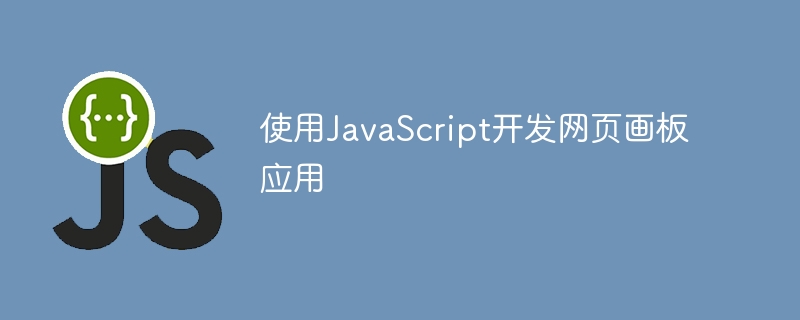

Using JavaScript to develop web drawing board applications
With the continuous development of Internet technology, many traditional media and tools have been replaced by digitization and networking. Among them, the web drawing board application has become a very popular and widely used tool in recent years. The web drawing board application allows users to freely draw and graffiti on web pages, providing rich drawing and editing functions without installing any software.
This article will introduce how to use JavaScript to develop a simple web drawing board application. We will use the HTML5 Canvas element and JavaScript event listeners to implement the drawing function.
First, we need to add a Canvas element as a drawing area in the HTML document and set its width and height. The Canvas element is a new element in HTML5, which provides a canvas on which 2D or 3D graphics can be drawn.
<!DOCTYPE html> <html> <head> <title>网页画板应用</title> </head> <body> <canvas id="canvas" width="800" height="600"></canvas> </body> </html>
Next, we need to write JavaScript code to implement the drawing function. First, we need to get the context of the Canvas element. Various drawing methods can be called through the context object.
var canvas = document.getElementById('canvas');
var context = canvas.getContext('2d');We can use the context object method to draw various shapes, lines and colors. For example, use the context.fillRect(x, y, width, height) method to draw a filled rectangle, and use the context.strokeRect(x, y, width, height) method to draw a filled rectangle. A border rectangle, use the context.beginPath() method to start a path, use the context.lineTo(x, y) method to draw a line segment, and finally use the context.stroke( ) method to render the path.
Next, we need to listen to mouse events to implement user drawing operations. For example, when the user presses the left mouse button, we need to record the position of the mouse and start drawing the path; when the user moves the mouse, we need to continuously update the end point of the path; when the user releases the left mouse button, we need to end the path. draw.
var isDrawing = false;
var lastX = 0;
var lastY = 0;
function startDrawing(e) {
isDrawing = true;
lastX = e.clientX;
lastY = e.clientY;
}
function draw(e) {
if (!isDrawing) return;
context.beginPath();
context.moveTo(lastX, lastY);
context.lineTo(e.clientX, e.clientY);
context.stroke();
lastX = e.clientX;
lastY = e.clientY;
}
function stopDrawing() {
isDrawing = false;
}
canvas.addEventListener('mousedown', startDrawing);
canvas.addEventListener('mousemove', draw);
canvas.addEventListener('mouseup', stopDrawing);Through the above code, we have completed a simple web drawing board application. The user can press the left mouse button on the artboard and drag to draw a line, and release the left mouse button to end the current path. Next, you can expand and optimize this application according to your needs to achieve more and richer drawing functions.
To sum up, the Canvas element of JavaScript and HTML5 provides very convenient and powerful drawing functions. We can use them to develop a variety of web drawing board applications. Through the introduction and code examples of this article, I believe you already have a certain understanding and mastery. I hope you can further explore and use these technologies to create more cool web drawing board applications!
The above is the detailed content of Develop web drawing board applications using JavaScript. For more information, please follow other related articles on the PHP Chinese website!
